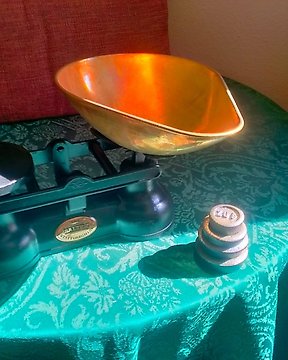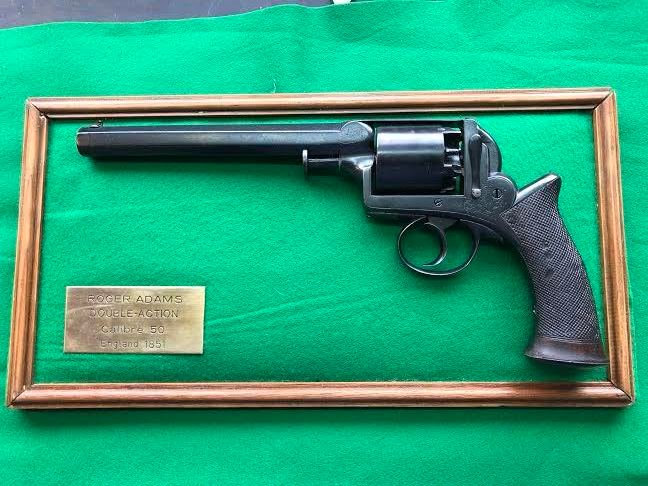
SALTER - Balance or scale - Salter - Iron (cast/wrought)
No. 29130329

No. 29130329

Percussion revolver Beaumont-Adams 50 caliber
Roger Adams
Double Action
"The Beaumont-Adams Revolver is a double action percussion revolver. Originally adopted by the British Army in 1856 (.442 caliber and 11.2 mm diameter), many were later converted to use centre-fire cartridges. It was replaced in British service in 1880 by the Revolver Enfield Mk I (.476 caliber and 11.6 mm diameter)."
"On 20 of February 1856, was granted a British patent for Lieutenant Frederick E.B. Beaumont of the Royal Engineers to improvements in Adam revolver, which allowed them to be engaged and fired, using the hammer as the Colt single action revolvers, or simply pulling the trigger. Beaumont received a U.S.A. patent (No. 15,032 [2]) on 3 of June of the same year. "
"At that time, Adams and Colt competed intensely. This process meant that sales grew quickly and a weapons and ammunition factory was set up to compete with the British firearms company, manufacturing guns with interchangeable parts. The Adams revolvers of 1851 and 1854 have automatic trigger, known as double-action. These firearms were the favourites of the British officers in the Crimean War and in colonial conflicts due to their size and speed to pull the trigger being faster than the Colt revolvers; ideal for average distance shots.[3]
In partnership with George and John Deane, Deane, Adams & Deane produced a new revolver in caliber and varying sizes, from pocket versions to larger versions with military purposes. The United Kingdom officially adopted the Beaumont-Adams in 1856, soon followed by the Netherlands and Russia.[4] To meet the demand, Deane, Adams & Deane hired companies in Birmingham and Liége to manufacture these firearms under license. The new revolver gave a big advantage to Robert Adams on Samuel Colt, causing the same to close his factory in London by the drop in sales.
In the United States, the Massachusetts Arms Company was authorized to produce 19000 specimens of 36 caliber weapon, being 1750 of them purchased by Union Army early in the American Civil War. Were also made pocket 32 caliber versions."
How to buy on Catawiki
1. Discover something special
2. Place the top bid
3. Make a secure payment